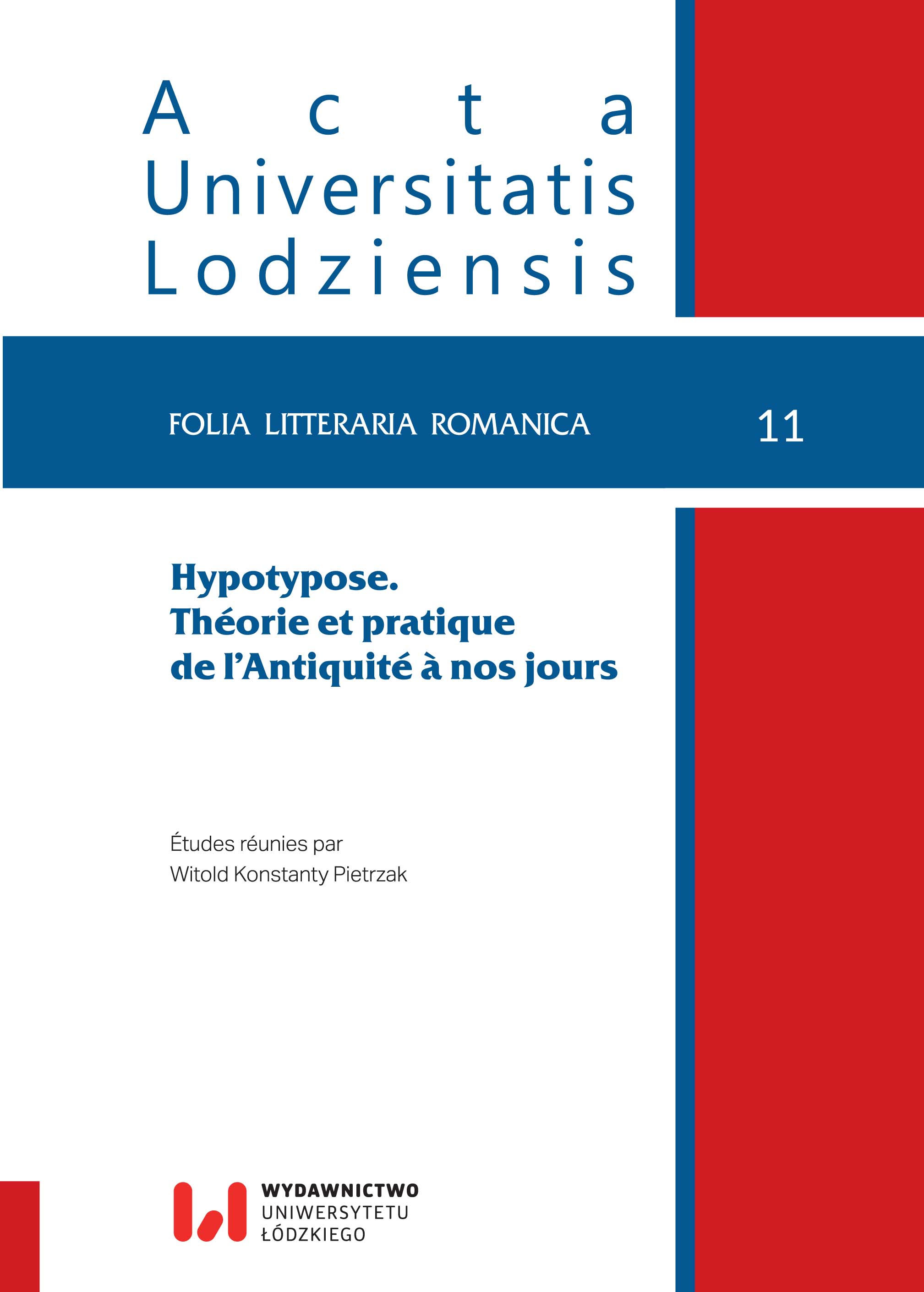L’expérience par procuration : l’hypotypose et la narration historique de l’Antiquité à la Renaissance
DOI:
https://doi.org/10.18778/1505-9065.11.03Słowa kluczowe:
experience, narration historique, Antiquité, Renaissance, hypotyposeAbstrakt
Aussi longtemps que l’histoire a été considérée comme magistra uitae il a fallu que ses lecteurs puissent avoir l’impression, en la lisant, d’assister et de participer aux événements racontés afin de vivre, par procuration, l’expérience d’autrui. C’est par rapport à cette fonction pédagogique du récit historique en tant que récit d’expérience que nous voudrions interroger les procédés qui caractérisent l’hypotypose (la parataxe, la précision et l’accumulation des détails, l’effacement du locuteur) ainsi que les pouvoirs (de « monstration », d’émotion et de persuasion) qui lui sont attribués. Il s’agira de revenir, en amont de la définition rhétorique de la « figure de style », vers ce qui est sans doute une matrice originaire de l’art de « faire voir » pour retrouver le lien fondateur et problématique qui relie l’hypotypose à l’expérience et à la double exigence d’en rendre compte et de la transmettre à autrui. Nous escomptons ainsi éclaircir quelques aspects du rapport entre histoire et rhétorique depuis l’Antiquité et jusqu’à la Renaissance, et analyser la contradiction qui caractérise le nom même d’hypotypose – « description à grand traits » et « description évidente » – ainsi que sa relation étrange avec son quasi paronyme : la diatypose.
Pobrania
Bibliografia
Berardi, Francesco, La Dottrina dell’evidenza nella tradizione retorica greca e latina, Perugia, Editrice “Pliniana”, 2012
Google Scholar
Calame, Claude, « Quand dire, c’est faire voir. L’évidence dans la rhétorique antique », Études de Lettres, 4, 1991, p. 3-22
Google Scholar
Cassin, Barbara, « Procédures sophistiques pour construire l’évidence », in : Carlos Lévy et Laurent Pernot (dir.), Dire l’évidence, Paris, L’Harmattan, 1997, p. 15-29
Google Scholar
Charbonnel, Nanine, Critique des métaphysiques du propre : La ressemblance et le Verbe, Georg Olms Verlag, 2014
Google Scholar
Cousin, Jean, Études sur Quintilien, t. I, Paris, 1967
Google Scholar
Couzinet, Marie-Dominique, Histoire et méthode à la Renaissance. Une lecture de la Methodus de Jean Bodin, Paris, Vrin, 1996 Genette, Gérard, Figures III, Paris, Seuil, 1972
Google Scholar
Jérôme, Laurent, « La notion d’‘esquisse’ selon Sextus Empiricus », Revue philosophique de la France et de l’étranger, 183.4, 1993, p. 649-659
Google Scholar
Koselleck, Reinhardt, Le Futur passé. Contribution à la sémantique des temps historiques, Paris, Éditions de l’École des hautes études en sciences sociales, 2016 ; 2e éd.
Google Scholar
Le Bozec, Yves, « L’hypotypose : un essai de définition formelle », L’Information Grammaticale, no 92, 2002, p. 3-7
Google Scholar
Plett, Heinrich F., Enargeia in Classical Antiquity and the Early Modern Age. The Aesthetics of Evidence, Leiden and Boston, Brill, 2012
Google Scholar
Rées, Agnès, La Poétique de la vive représentation et ses origines italiennes à la Renaissance (1547-1560), sous la dir. de M. le Professeur Jean Balsamo, Université de Reims-Champagne-Ardennes, 2011
Google Scholar
Roux, Georges, « Le sens de ΤΥΠΟΣ », Revue des Études Anciennes, 1961, vol. 63, no 1, p. 5-14 Webb, Ruth, « Mémoire et imagination : les limites de l’enargeia dans la théorie rhétorique grecque », in : Carlos Lévy et Laurent Pernot (dir.), Dire l’évidence, Paris, L’Harmattan, 1997, p. 229-248
Google Scholar
Zangara, Adriana, Voir l’histoire. Théories anciennes du récit historique, Paris, Vrin, 2007
Google Scholar
Pobrania
Opublikowane
Jak cytować
Numer
Dział
Licencja

Utwór dostępny jest na licencji Creative Commons Uznanie autorstwa – Użycie niekomercyjne – Bez utworów zależnych 4.0 Międzynarodowe.













